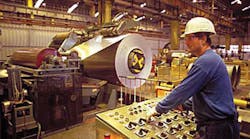In 2010, Alcoa Inc. CEO Klaus Kleinfeld set a three-year goal. He wanted the global aluminum giant to achieve best-in-class levels of employee engagement -- and for good reason.
Engagement impacts the company's fortunes, says Mike Barriere, vice president, human resources. "There are a lot of variables outside of our control," he says, "but the more engaged employees are, time over time, the better the outcome."
With a goal of reaching best in class, Alcoa (IW 500/48) has upped its efforts to determine the drivers of employee engagement and to act on that information. It is doing so by diving deeper into the data, using a statistical technique that Barriere believes exceeds what is common practice among most companies.
The data are the information collected via employee surveys. Like many companies, Alcoa conducts employee-engagement surveys and calculates an engagement index, working with an outside vendor. Such tracking has been in place since 2006.
Alcoa's deeper dive into the data, implemented recently and performed internally, allows it to more specifically target the drivers of employee engagement. For example, data analysis revealed that the best differentiator between high and low levels of engagement was an employee's belief about whether Alcoa has an outstanding future (a statement on the employee survey). The engagement level among employees who believed the company has an outstanding future was 84%. The engagement level among employees who did not was 36%.
An even deeper dive, says Barriere, revealed more: For example, the engagement level for the employee population who believed Alcoa has an outstanding future and who can see a clear link between their work and Alcoa's objectives was 94%. Among the employee population who did not believe Alcoa has an outstanding future and who did not feel valued as an employee, the engagement level was about 20%.
The insights also can be delivered at the local level, to the 120 or so Alcoa operating locations. (Data are aggregated so they cannot be tied to any individuals.)
The deep data analysis tells a story, Barriere says, and among the stories is that "feeling valued is a price of entry" for engagement. However, that alone does not drive the nearly 81% best-in-class level of employee engagement Alcoa aims to achieve.
Alcoa has been turning its new insights into action, and the annual performance process provides one example. The company conducted significant communication and training to assist employees in developing work and personal objectives that connect to the overall objectives of their department and business unit, as well as to the broader company.
When Alcoa began measuring engagement in 2006, it achieved about a 50% level of engagement, Barriere says. In 2011 it had climbed to 70%. "There is a lot of momentum," the HR vice president says.



